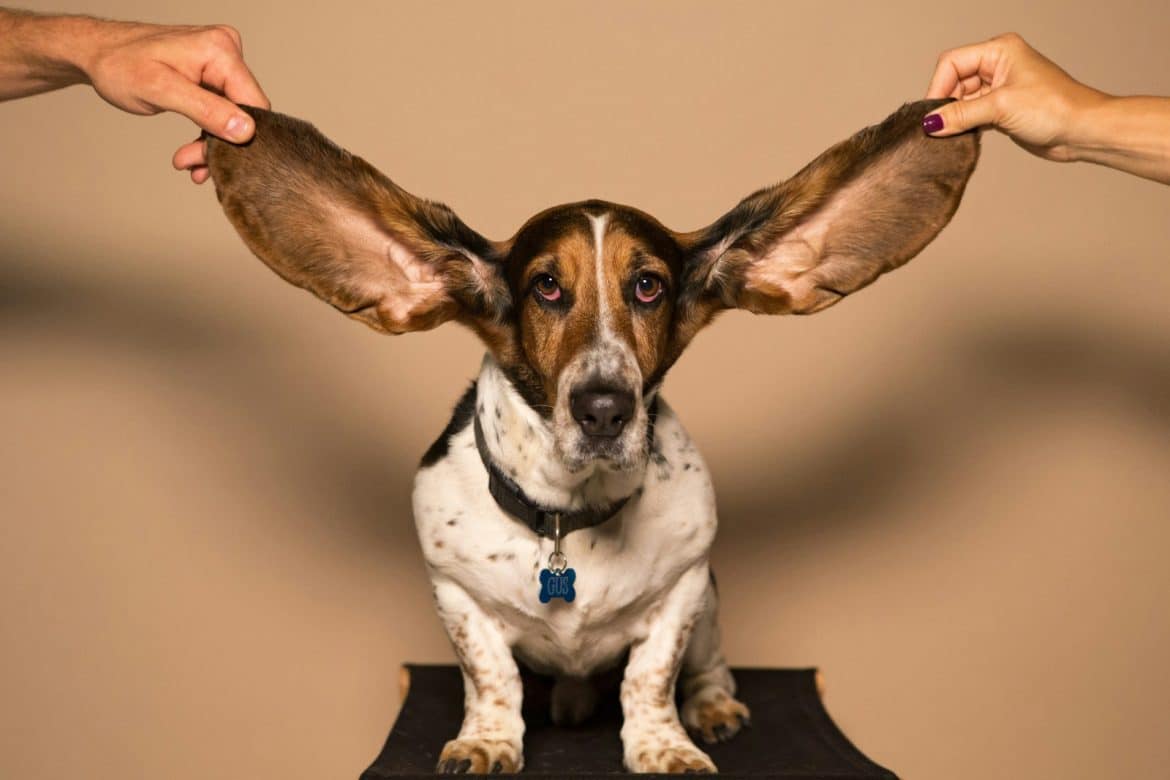Did you know that the age at which puppies' ears stand up can vary depending on the breed? It's an interesting and adorable phenomenon to witness, as those floppy ears gradually become alert and perky. While some puppies' ears may start standing up as early as 8 weeks, others may take several months. The timing can differ based on genetics, breed characteristics, and even the individual puppy's development. So, if you're eagerly awaiting those cute and perky ears on your furry friend, keep an eye out for the telltale signs as they grow and explore the world around them.
Puppy Development

This image is property of images.pexels.com.
Overview of Puppy Development
Puppy development is an exciting and crucial process that entails various physical, emotional, and cognitive changes. As a new puppy owner, understanding the different stages of puppy development is essential for providing the appropriate care and support needed for your furry friend's well-being. One fascinating aspect of puppy development is the evolution of their ears, which undergo remarkable changes from embryonic stages to standing upright. In this article, we will explore the journey of ear development in puppies, factors that influence ear standing, ear care tips, and common ear-related issues that may arise.
Physical Changes in Puppies
Physical changes in puppies occur rapidly during their early stages of life. These changes contribute to the overall growth and development of the puppy's body, including the transformation of their ears. As puppies grow, their body proportions change, and their ears begin to adapt accordingly. It's important to note that the timing and extent of ear development can vary among different breeds and individual puppies. Understanding these physical changes will help you identify normal ear development and potential issues.
Importance of Ears in Puppy Development
Ears play a vital role in a puppy's development, beyond just their aesthetic appeal. They serve several essential functions, such as aiding in sound perception, balance, and communication. Proper ear development is crucial for a puppy to navigate their surroundings and communicate effectively with both humans and other animals. Consequently, it is essential to monitor and support your puppy's ear development to ensure their overall well-being and proper integration into their environment.
Ear Development in Puppies
Embryonic Stage of Ear Development
Ear development begins during the embryonic stage when the puppy is still in its mother's womb. The formation of the external ear starts around the third week of gestation. At this stage, the ear tissue begins to develop, laying the foundation for the future shape and structure of the puppy's ears. While the ear's development is in progress during this stage, it is not visible, and changes are occurring internally.
Newborn Puppies and Ear Position
During the newborn stage, puppies' ears are typically folded and lie flat against their heads. This position is a result of the ear cartilage still being soft and pliable, making them easily adjustable and facilitating the birthing process. It's important to note that the ears' position at this stage does not indicate how they will eventually develop in the future.
Evolution of Ear Shape and Structure
As puppies progress through their development, their ears gradually change shape and structure. Around the age of two to three weeks, you may start to notice slight changes in the position of the ears. They may begin to unfold and lift slightly from the head, showing signs of the distinctive shape they will eventually have. Over time, the puppy's ear cartilage will continue to strengthen and firm up, contributing to the final shape and standing ability of the ears.
Factors Affecting Ear Development
Various factors can influence ear development in puppies. Genetics play a significant role as certain breeds are predisposed to having specific ear shapes or standing abilities. Additionally, nutrition and diet contribute to overall growth and development, including the strengthening of ear cartilage and muscles. Environmental factors, such as exposure to loud noises, temperature fluctuations, and physical activities, can also impact ear development. It's important to understand these factors and provide the necessary support to ensure optimal ear development for your puppy.

This image is property of images.pexels.com.
When Puppies' Ears Start to Stand Up
Typical Timeline for Ear Standing
The exact timing of when puppies' ears start to stand up can vary widely depending on the breed and individual puppy. Generally, the process begins between the ages of eight to twelve weeks. During this period, you may notice gradual changes in the position of the ears. They may start to become more alert and perkier, gradually standing upright as the ear cartilage continues to strengthen. It's important to be patient during this phase, as every puppy's development is unique.
Variations in Ear Development
While many puppies' ears will naturally stand up on their own, it's important to acknowledge that there can be variations in ear development. Some puppies may experience delayed ear standing, where the ears may take longer to stand up or may not stand up fully at all. Variations can also occur due to breed-specific characteristics or individual differences within a litter. It is crucial to monitor these variations and intervene if necessary to ensure the puppy's well-being.
Breeds with Late Ear Standing
Certain breeds are more prone to having late ear standing. Breeds such as Corgis, Shetland Sheepdogs, and Beagles are known to have later ear development, with some individuals not achieving full ear standing until four to six months of age. This delayed ear development is a normal characteristic for these breeds and should not be a cause for concern.
Possible Reasons for Delayed Ear Standing
There can be several reasons why a puppy's ears may not stand up at the expected timeline. Genetics and inherited traits can play a significant role, especially if the puppy comes from a bloodline with a history of late ear standing. Factors such as inadequate nutrition or a nutrient imbalance in the diet can also affect ear development. Additionally, excessive manipulation of the puppy's ears or exposure to ear trauma can hinder proper ear standing. If you have concerns about your puppy's ear standing, consulting with a veterinarian or breeder can provide valuable guidance.
Factors Influencing Ear Standing
Genetics and Inheritance
Genetics play a critical role in determining how a puppy's ears will develop. The genes passed down from the parents influence the structure and strength of the ear cartilage. If both parents have strong ear cartilage, it is more likely that the puppy's ears will stand up confidently. However, it's important to consider that genetic variations can exist within a breed, and not all puppies from the same litter may have the same ear standing outcome.
Nutrition and Diet
A balanced and nutrient-rich diet is essential for optimal puppy growth and development, including the development of strong ear cartilage and muscles. Proper nutrition helps support the overall structure and strength of the ears, making them more likely to stand up as the puppy grows. Consult with your veterinarian to ensure you are providing the appropriate diet for your puppy's specific nutritional needs.
Environmental Factors
The environment in which a puppy grows up can have an impact on their ear development. Exposure to loud noises or continuous ear manipulation can affect the puppy's ears' proper formation and standing ability. Similarly, extreme temperature fluctuations or inadequate protection from the elements may influence the puppy's ear development. Providing a safe and comfortable environment that minimizes stressors is crucial for optimal ear development.
Muscle and Cartilage Development
Muscles and cartilage work together to support the standing ability of a puppy's ears. Adequate muscle development around the ears is necessary for ensuring proper ear standing. Promoting physical activities that engage the ear muscles, such as regular play sessions or interactive toys, can help strengthen these muscles. Additionally, allowing the puppy to chew on appropriate toys or treats can contribute to cartilage development and overall ear health.

This image is property of images.pexels.com.
Ear Care for Puppies
Cleaning and Inspection
Regular cleaning and inspection of your puppy's ears should be part of your routine care. Gently cleaning the visible part of the ear with a damp cloth or a veterinarian-recommended ear cleaning solution can help prevent the accumulation of dirt, wax, or debris. It is essential to avoid inserting any objects deep into the ear canal, as this can cause damage or injury.
Preventing Ear Infections
Ear infections can be a common issue in puppies, especially those with long floppy ears or breeds prone to ear problems. To prevent ear infections, make sure to dry your puppy's ears thoroughly after bathing or swimming. Avoid exposing your puppy to excessive moisture or using harsh soaps or shampoos that may irritate the ears. If you notice any signs of an ear infection, such as excessive scratching, redness, or odor, consult your veterinarian for appropriate treatment.
Trimming Excess Hair around Ears
Some puppies, particularly those with longer fur, may have excess hair around their ears. Trimming this hair can help improve airflow and prevent the accumulation of moisture or debris that can contribute to ear issues. However, it is important to exercise caution when trimming hair near the ears and consider seeking professional grooming assistance if you are not comfortable doing it yourself.
Regular Veterinary Checkups
Regular veterinary checkups are essential for monitoring your puppy's overall health, including their ear development. During these checkups, the veterinarian can assess the progress of ear development, provide guidance on any concerns, and address any potential ear-related issues. Building a strong partnership with your veterinarian ensures that you are equipped with the knowledge and resources to provide the best care for your puppy's ears.
Encouraging Ear Standing
Activities that Promote Ear Muscle Strength
Engaging your puppy in activities that promote muscle strength can have a positive impact on their ear development. Providing appropriate chew toys, such as rubber toys or dental chews, encourages chewing and jaw movement, which indirectly strengthens the ear muscles. Additionally, playing with interactive toys that require head movement, such as retrieving games or treat puzzles, can help engage the ear muscles.
Providing Proper Nutrition for Optimal Development
As mentioned earlier, proper nutrition is essential for promoting optimal ear development. Ensure that your puppy is receiving a well-balanced diet that meets their specific nutritional needs. Consult with your veterinarian to determine the appropriate type and amount of food for your puppy's growth stage and breed. Feeding high-quality puppy food formulated with essential nutrients, including omega-3 fatty acids, can promote healthy ear cartilage development.
Avoiding Excessive Manipulation of Puppy's Ears
While it may be tempting to constantly adjust or manipulate your puppy's ears in hopes of helping them stand up, it is important to avoid excessive handling. Excessive manipulation can lead to injury or discomfort, hindering the natural development of the ears. Gentle touches and positive reinforcement during regular head and ear massages can be beneficial, but it is essential to respect your puppy's boundaries and avoid unnecessary intervention.
Consulting with a Veterinarian or Breeder for Guidance
If you have concerns about your puppy's ear development or are unsure about the best approach to encourage ear standing, consulting with a veterinarian or breeder can provide valuable guidance. These professionals can assess your puppy's specific situation, provide specialized insights, and offer recommendations tailored to your puppy's needs. With their expertise, you can ensure that you are taking the appropriate steps to support your puppy's ear development.
When to Seek Veterinary Help
Signs of Abnormal Ear Development
While variations in ear development are common, there are certain signs that may indicate abnormal ear development. If one ear is standing while the other is floppy, or if the ears have an asymmetrical appearance, it may be indicative of an underlying issue. Additionally, if your puppy's ears do not begin to stand up by the age of six months, it is recommended to seek veterinary help for further evaluation and guidance.
Persistent Ear Floppiness
If your puppy's ears show no signs of standing up even after the typical timeline for ear standing, it is essential to consult with a veterinarian. Persistence of floppy ears beyond the expected timeframe may indicate an underlying condition that requires medical attention. The veterinarian can evaluate the ear structure, assess potential genetic factors, and provide appropriate recommendations or interventions.
Injury or Trauma to the Ears
In some cases, puppies may experience ear injuries or trauma that can affect their ear standing ability. If you notice any signs of injury, such as bleeding, swelling, or tenderness, it is crucial to seek veterinary help promptly. Early intervention can prevent further complications and ensure proper healing, allowing the puppy's ears to develop and stand up correctly.
Other Developmental Concerns
If you have any other concerns about your puppy's overall development or notice any abnormalities or delays in other areas, it is important to discuss these with your veterinarian. Developmental issues may sometimes be interconnected, and a comprehensive evaluation can help identify any underlying causes or conditions that may be affecting ear development.
Caring for Puppy Ears after Standing
Maintaining Proper Ear Hygiene
After your puppy's ears have successfully stood up, it is crucial to continue maintaining proper ear hygiene. Regularly inspecting and cleaning the ears to remove dirt or excessive wax buildup can help prevent ear infections. Gently wipe the visible portions of the ears with a damp cloth or a veterinarian-recommended ear cleaning solution as needed. Remember to avoid inserting anything deep into the ear canal to prevent accidental injury.
Training and Socializing with Respect to Ears
Training and socializing your puppy should include teaching them to be comfortable with gentle ear handling. Gradually introducing positive experiences with ear touches and inspections during regular grooming sessions helps them develop a positive association with ear care. Additionally, exposing your puppy to various sounds, environments, and interactions can aid in their overall ear development and adaptability.
Protecting Ears from Extreme Weather Conditions
During extreme weather conditions, such as extreme heat or cold, it is important to protect your puppy's ears. Excessive exposure to extreme temperatures can be uncomfortable or potentially harmful to their delicate ear tissues. When going outside, consider using ear protection, such as doggie earmuffs or hats, to shield their ears from the elements. Additionally, providing a comfortable indoor environment with appropriate temperature control helps ensure their well-being.
Monitoring for Ear-related Health Issues
Even after your puppy's ears have stood up and developed properly, it is important to monitor for any potential ear-related health issues. Regularly check for signs of ear infections, such as redness, swelling, foul odor, or excessive scratching. If you notice any of these symptoms, consult your veterinarian for appropriate diagnosis and treatment. Timely intervention can prevent the progression of ear problems and maintain your puppy's overall ear health.
Common Ear Issues in Puppies
Ear Infections
Ear infections are a common problem in puppies and can occur due to various factors, including bacterial or yeast overgrowth, ear mites, or allergies. Symptoms of an ear infection may include excessive scratching, head shaking, redness, swelling, discharge, or an unpleasant odor. If you suspect your puppy has an ear infection, it is essential to seek veterinary care for proper diagnosis and treatment.
Ear Mites
Ear mites are tiny parasites that can infest a puppy's ears, causing irritation and discomfort. If your puppy frequently scratches their ears or exhibits signs of itchiness, such as head shaking or ear rubbing, ear mites may be the culprit. A veterinarian can confirm the presence of ear mites and prescribe appropriate medication to eliminate the infestation.
Allergies and Irritations
Puppies can develop allergies to various substances, such as certain foods, environmental allergens, or grooming products. Allergies can manifest as redness, itchiness, or inflammation in the ears. If you suspect your puppy has allergies, consult with a veterinarian to determine the allergen and develop a management plan to alleviate symptoms and prevent further ear irritation.
Ear Hematomas
An ear hematoma is a collection of blood between the skin and cartilage of the ear, often resulting from trauma or vigorous shaking of the head. It manifests as a swollen, fluid-filled lump on the ear flap. If you notice a sudden swelling or change in the shape of your puppy's ear, it is crucial to seek immediate veterinary care. Treatment typically involves draining the hematoma and addressing any underlying causes to prevent recurrence.
Conclusion
Understanding the process of ear development in puppies is important for providing appropriate care and support throughout their growth. While the timeline and extent of ear standing may vary among puppies, factors such as genetics, nutrition, environment, and muscle development play significant roles in ear development. By maintaining proper ear hygiene, promoting optimal nutrition, avoiding excessive manipulation, and seeking veterinary guidance when needed, you can ensure the best ear health and well-being for your puppy. Remember, regular veterinary checkups are essential for monitoring overall ear development and addressing any ear-related issues promptly. With your love and attention, your puppy's ears will stand tall, contributing to their overall charm and uniqueness.


